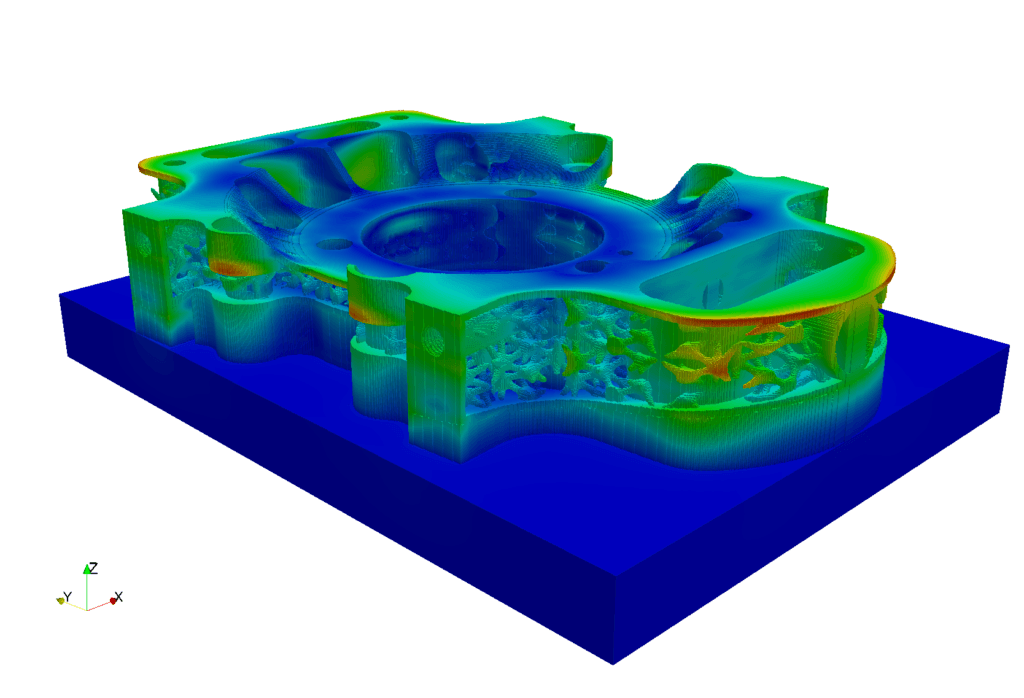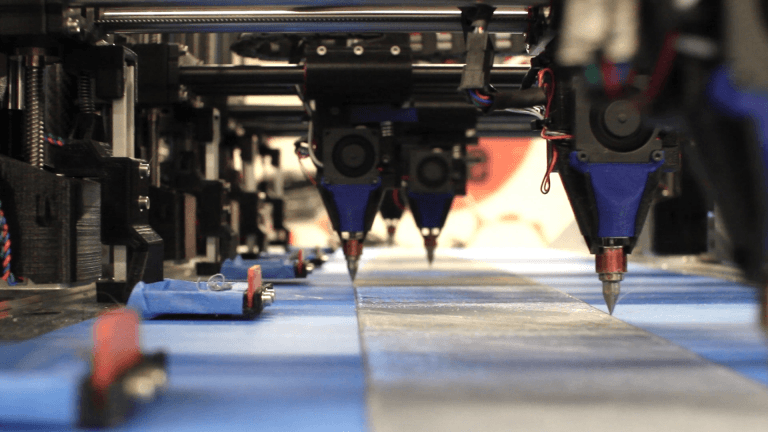 In September, Autodesk released the annual update to their additive manufacturing and design software, Netfabb. While Netfabb 2017 came packed with new features and improvements, Autodesk was by no means finished with this year’s upgrade. Just two months after Netfabb 2017’s release, Autodesk has added even more updates to the software, increasing its capabilities as what Autodesk calls “a true end-to-end additive manufacturing solution.”
In September, Autodesk released the annual update to their additive manufacturing and design software, Netfabb. While Netfabb 2017 came packed with new features and improvements, Autodesk was by no means finished with this year’s upgrade. Just two months after Netfabb 2017’s release, Autodesk has added even more updates to the software, increasing its capabilities as what Autodesk calls “a true end-to-end additive manufacturing solution.”
Netfabb’s connected design and additive manufacturing software already enable users to take products from CAD design to finished part in a streamlined process that allows for testing, optimization, preparation and printing. It’s become a valued tool for both large and small businesses, manufacturers and service bureaus.
“Not only is Netfabb easy to use, it does much of the heavy lifting in preparing models for 3D printing,” said Dan Ko, Strategic Initiatives Lead at Shapeways. “Netfabb streamlines the process of fixing common 3D print file problems for additive manufacturing. If we didn’t have Netfabb to automate a large portion of file preparation process, each build would be substantially more time consuming and labor intensive.”
 Several new tools have been introduced to make Netfabb even more connected and competitive. Cloud-based simulation, which has been available for Netfabb since September in conjunction with a local solver, is in the process of being improved and turned into a pay-per-use feature for a future version of Netfabb. This new cloud solving option will be available to subscribers for free from November 30 to January 15, and feedback from subscribers will help Autodesk determine the direction of the final feature.
Several new tools have been introduced to make Netfabb even more connected and competitive. Cloud-based simulation, which has been available for Netfabb since September in conjunction with a local solver, is in the process of being improved and turned into a pay-per-use feature for a future version of Netfabb. This new cloud solving option will be available to subscribers for free from November 30 to January 15, and feedback from subscribers will help Autodesk determine the direction of the final feature.
In addition, Netfabb now includes hybrid subtractive and additive manufacturing workflows. The two go together more often than one might expect, as evidenced in the growing number of 3D printer/CNC machine hybrids hitting the market this year. Subtractive manufacturing, such as CNC milling, is often needed to improve the surface finish and accuracy of features on additively manufactured parts, although to compensate for the material being milled away, the original part needs to be designed with extra material, creating a larger object (known as a “near-net-shape” object) than will ultimately be needed.
Netfabb now has solid modeling and near-net-shape planning capabilities based on Autodesk PowerShape technology. Users can now keep their models in solid form and use solid modeling tools aligned to CAM workflows, and manufacturers can easily track the near-net-shape as it is built while also keeping an eye on the original model, smoothing the workflow between build preparation and post-processing.
The new update also includes technology from Project Escher, Autodesk’s advanced software that controls the movements of multiple 3D printer heads working together on one print job. The technology allows for large industrial parts to be printed in one piece with greater speed and detail, and Autodesk is also open-sourcing the hardware specifications and software required to create printers with multiple-printhead technology.
“The new production, optimization and simulation tools within Netfabb are very exciting and we are delighted to be working with Autodesk to enable a streamlined additive manufacturing print experience for our joint customers,” said Stephen Anderson, Renishaw Software Director. “We look forward to future integration opportunities with the QuantAM ‘workbench’ – a series of API’s that can be made available to those wishing to leverage the power of the Renishaw additive manufacturing platform. This will give users of Autodesk Netfabb the confidence that any toolpaths they generate will be optimized for Renishaw’s AM systems, ensuring maximum part quality every time.”
The new updates to Netfabb are available as of today, November 30, and existing subscribers will receive them automatically.
“Netfabb helps to accelerate the additive manufacturing design and production process by giving designers and engineers the tools they need to make better parts, streamline their workflows and improve the efficiency of their printers in one comprehensive software solution,” said Mark Forth, manager of manufacturing industry strategy at Autodesk. “The addition of cloud-based simulation, subtractive workflow capabilities and collaborative 3D printing means that we are now providing our customers with the most comprehensive and powerful additive solution on the market.”
Discuss in the Netfabb forum at 3DPB.com.
[Source: Autodesk]
Subscribe to Our Email Newsletter
Stay up-to-date on all the latest news from the 3D printing industry and receive information and offers from third party vendors.
You May Also Like
Gorilla Sports GE’s First 3D Printed Titanium Cast
How do you help a gorilla with a broken arm? Sounds like the start of a bad joke a zookeeper might tell, but it’s an actual dilemma recently faced by...
Nylon 3D Printed Parts Made More Functional with Coatings & Colors
Parts 3D printed from polyamide (PA, Nylon) 12 using powder bed fusion (PBF) are a mainstay in the additive manufacturing (AM) industry. While post-finishing processes have improved the porosity of...
$25M to Back Sintavia’s Largest Expansion of Metal 3D Printing Capacity Since 2019
Sintavia, the digital manufacturing company specializing in mission-critical parts for strategic sectors, announced a $25 million investment to increase its production capacity, the largest expansion to its operations since 2019....
Velo3D Initiates Public Offering in a Bid to Strengthen Financial Foundations and Drive Future Growth
Velo3D (NYSE: VLD) has been among a number of publicly traded 3D printing firms that have attempted to weather the current macroeconomic climate. After posting a challenging financial report for 2023,...
































